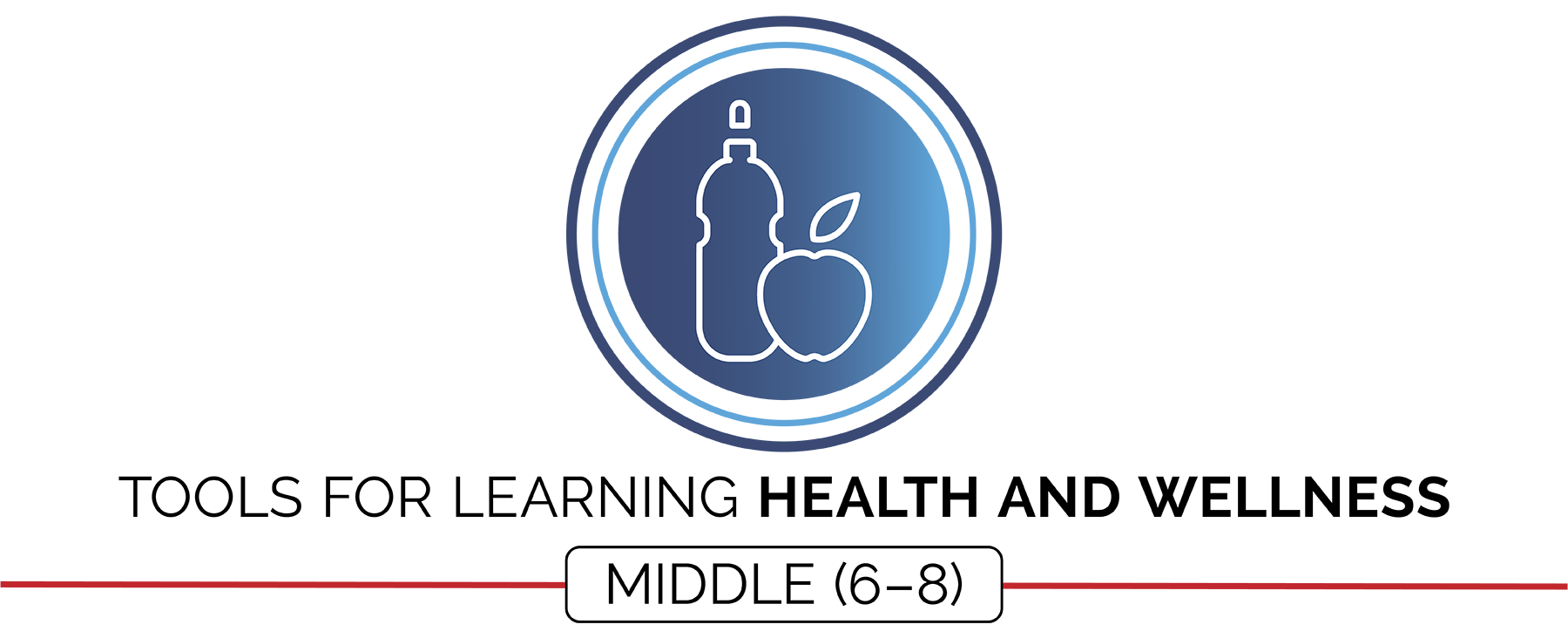Created by: Nichole Wilder & Andrea Hart, RDN CDN
Special Contributions: Aaron Hart
Studies have shown that healthy students get better grades, attend school more, and often behave better in class. This module includes activities that are designed to help students develop the knowledge and skills to be healthy and active for a lifetime.
The pillars of good health are addressed through a variety of engaging and activity-based lessons. This allows physical education teachers the opportunity to address the physical and emotional well-being of students by developing and reinforcing healthy and responsible behaviors.
Module Documents
Complete Module Packet:
Module Overview:
Required Materials:
All Module Activities:
Sample Lesson Plan:
Academic Language Cards:
Universal Design Adaptations:
Pillars of Health Activity Cards:
Food Is Fuel Scavenger List:
Food Is Fuel Dice Card:
Food Relationship Gallery Walk Cards:
On The Run Paragraph 1:
On The Run Paragraph 2:
Spell It Out Worksheet:
Spell It Out Movement Key:
Sleep PSA Worksheet:
Activity Plans
Pillars of Health:
Food Is Fuel:
Food Relationships:
On The Run:
Spell It Out:
The A to ZZZ's of Sleep:
My Fitness Plan:
Assessments
Academic Language Quiz:
Spell It Out Worksheet:
Sleep PSA Worksheet:
- GREAT Goal 5-Day Journal: [PDF]
Teacher Self-Evaluation
Teacher Self-Evaluation/Reflection Guide:
Can’t see the file links? Register for FREE today to access all of the modules. SIGN UP HERE
Priority Outcomes:
Social Interaction:
- (6) Demonstrates respect for self and others in activities and games by following the rules, encouraging others, and playing within the spirit of the game or activity.
- (7) Demonstrates the importance of social interaction by helping and encouraging others, avoiding trash talk, and providing support to classmates.
- (8) Demonstrates respect for self by asking for help and helping others in various physical activities.
Physical Activity Knowledge:
- (6) Identifies a variety of physical activity options available in the local community.
- (7) Identifies barriers to maintaining a physically active lifestyle and seeks solutions for eliminating barriers.
- (8) Explains the connection between regular physical activity and overall physical, emotional, and mental health.
Fitness Programming:
- (6) Maintains a physical activity log for at least two weeks and reflects on activity levels documented in the log.
- (7) Designs a fitness and nutrition plan based on personal fitness goals, emotional and mental health needs, and activity preferences.
- (8) Seeks out and identifies fitness opportunities in the local community.
Nutrition:
- (6) Identifies foods from each food group that can be combined to build balanced meals.
- (7) Compares and contrasts the health benefits of whole foods verses processed foods.
- (8) Seeks out and makes requests for nutritious whole-food choices.
Personal Challenge:
- (6) Recognizes individual challenges and copes in a positive way, such as extending effort, asking for help/feedback, and/or modifying the tasks.
- (7) Generates positive strategies such as offering suggestions/assistance, leading/following others, and/or providing possible solutions when faced with a group challenge.
- (8) Develops a plan of action and makes appropriate decisions based on that plan when faced with a challenge.
Working with Others:
- (6) Accepts differences among classmates in physical development, maturation, and varying skill levels by providing encouragement and positive feedback.
- (7) Demonstrates cooperation skills by establishing rules and guidelines for resolving conflicts.
- (8) Responds appropriately to participants’ ethical and unethical behavior during physical activity by using rules and guidelines for resolving conflicts.

